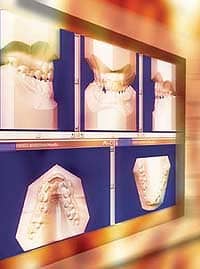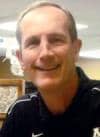With Marc Bernard Ackerman, DMD, MBA; Orhan C. Tuncay, DMD; and Kim J. Wass, DDS, MS
Three orthodontists discuss how they use them and how they would like to see them develop
Orthodontic Products: What drove your choice to use digital study models?
Marc Bernard Ackerman, DMD, MBA: The two drivers for starting “digital” were: 1) inadequate storage space on-site for the expected volume of patients; and 2) the ability to showcase digital technology to the patient and/or parents during consultations.
Kim J. Wass, DDS, MS: I got tired of hauling plaster study models to my satellite office to show my patients. Then I discovered how handy it was when I wanted to review a case at home.
OP: What products do you use in your digital study model process?
Ackerman: We use a fast-set, dimensionally stable (100 hours) alginate impression material called Kromopan by LASCOD. The impressions are disinfected, bagged, and then sent to OrthoCAD.
Wass: I use OrthoCad models in my satellite office and AnatoModels from Anatomage in my main office using scan data from my i-CAT machine.
OP: What sort of time savings (if any) have you seen during your records appointments?
Ackerman: At this point, we haven’t really noticed a time savings during the records visit. The process is largely the same as preparing to send for plaster casts.
 |
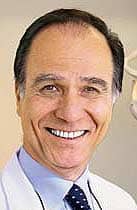 |
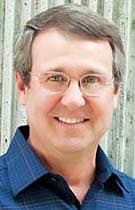 |
| Marc Bernard Ackerman, DMD, MBA | Orhan C. Tuncay, DMD | Kim J. Wass, DDS, MS |
Currently, we are investigating alternative means of direct-digital study model fabrication. First, we have looked at the iTERO intraoral scanning system by OrthoCAD. This system has great potential but may not be compatible with a 29-resident program. Second, we have looked at an alginate scanning system by OrthoInsight 3D by Motion View Software. Our Dean, Larry Jerrold, DDS, JD, has been a champion of new technology and allows the faculty to be early adopters of any technology that improves resident learning, the quality of the orthodontics rendered at JU, and promotes clinical efficiency.
Wass: The OrthoCad models just save lab time, not records appointment time. But in my office where I use AnatoModels, we actually schedule 15 minutes less time for records because it does not require impressions, just the i-CAT scan. We get essentially a ceph, pan, and study models with just the one scan.
OP: Have you found that there are clinical advantages to using digital over plaster?
Ackerman: In my opinion, the advantage of having digital models is that the orthodontist can be more effective at communicating dental findings and simulating recommendations during the consultation. One doesn’t look like a dinosaur holding plaster in the air and moving it back and forth to simulate Class II correction.
Wass: The main difference is the consistency of the digital models as opposed to plaster models. There are no flaws with digital models. With AnatoModels, I can manipulate the teeth to help help make diagnostic decisions.
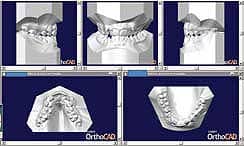
Orthodontists we interviewed said that digital study models made them “more effective at communicating dental findings and simulating recommendations” and that “patients love the idea of getting study models without making impressions.”
OP: How about patient marketing advantages?
Wass: For many patients, impressions are the worst part of the records appointment. My staff and patients love the idea of getting study models without making impressions. My patients and their parents seem impressed when they see the models displayed on the computer.
OP: Have you found drawbacks to using digital study models?
Ackerman: Plaster study casts were the only truly 3D record we had in orthodontics. So, by abandoning plaster, we essentially lose the ability to visualize dental relationships in 3D. For the vast majority of cases this isn’t a problem; however, during resident seminars the faculty will often say, “It would have been great if you had plaster for this patient!” We also lose the ability to do as many diagnostic wax setups for multidisciplinary care. All surgical cases are still treatment-planned with plaster models.
Wass: I know some orthodontists are used to having a physical model they can study. I have not found that to be a problem.
OP: Any other comments to share with your fellow orthodontists?
Ackerman: By and large, I would recommend that the new orthodontist begin practice in the digital world. The intraoral scanning technology is evolving at a rapid pace and will soon supplant alginate impressions. Soon we will be having our lab appliances fabricated from these digital models.
Orhan C. Tuncay, DMD: The industry should develop the technology and material for the in-office manufacturing of plaster-like models. Whenever the clinician feels the need to “hold” teeth in his/her hand, the newly developed technology should make it happen.
If it is too costly to develop the system, then the images (data set) should be compatible with a 3D printer’s operating system. The clinician could then simply do the printing in 3D in-house to satisfy the irresistible feeling of holding.
Wass: Digital models eliminate a lot of lab time and expense. I think there are a lot of advantages to having this diagnostic tool easily accessed from anywhere. With AnatoModels, the records appointment is less stressful and more comfortable. It gives us a modern way to communicate the orthodontic problems and recommended treatment to our patients and their parents.
Marc Bernard Ackerman, DMD, MBA, is an associate professor and director of the Fellowship in Orthodontic Clinical Research at the Jacksonville University School of Orthodontics. He can be reached at
Orhan C. Tuncay, DMD, is chairman and program director of the Department of Orthodontics at Temple University. He is the founding editor of four orthodontic journals: Orthodontics & Craniofacial Research, Progress in Orthodontics, Cases & Commentaries in Orthodontic Technology, and Clinical Reports & Techniques. He has private practices in center city Philadelphia and Bryn Mawr, Pa. He can be reached via e-mail at or through his Web site, rittenhouseortho.com.
Kim J. Wass, DDS, MS, is in private practice in Ames and Pella, Iowa. He can be reached at


